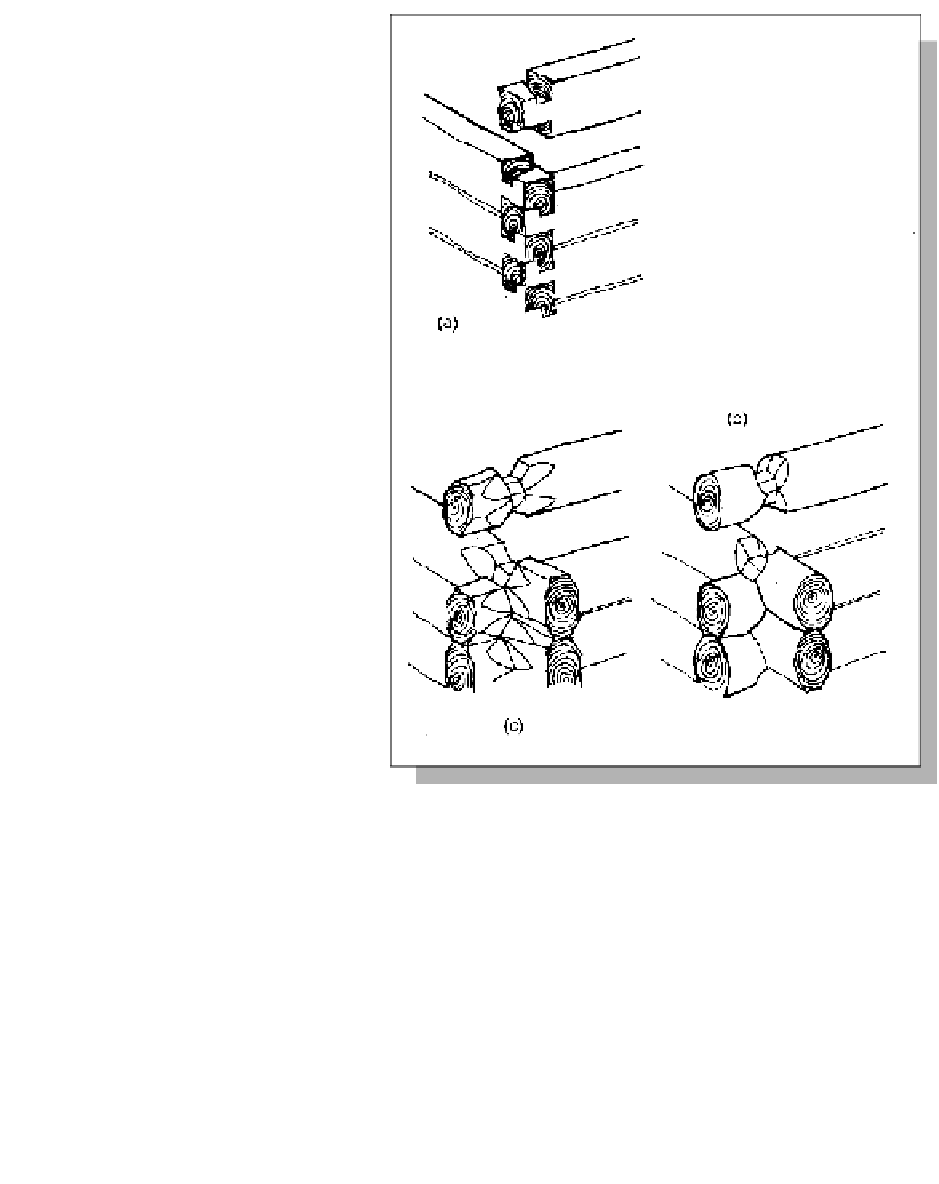Civil Engineering Reference
In-Depth Information
Stovewood house and firewood shed
Stovewood houses came from the last
century. They represent a recycling
building tradition and were built of bits
of plank and spill from the sawmills,
using a mortar of pure clay mixed with
water and sawdust or chaff. The wall
was more stable laterally than log con-
struction, but needed a couple of years
to settle before wallpapering and pan-
elling.
Stave construction
This is a braced skeletal construction
filled with vertical boards or plank
tongued into a bottom and top plate. In
modern post and lintel construction the
space between is usually filled with
boards and insulation which also
braces the structure. The timber com-
ponents are heavy and well-suited to
recycling, providing that appropriate
methods of fixing are used.
Structural framework
This consists of studs mounted
between a top plate and a bottom
plate and bracing. There have been
many variations on this theme
through time. The tendency has been
toward small dimensions of timber
components and more rational
design. This has reduced the quality
of the structure to a certain extent,
particularly in relation to its strength. The distance between the studs can vary some-
what, from 300 mm to 1.2 m. Studwork was previously braced with diagonal lengths of
timber, but nowadays it is more usually braced with sheets of fibre-, plaster- or chip-
board.
The spaces in the wall are filled with different types of insulation. In earlier times they
were filled with clay (in wattle walls), firewood, or bricks (known as half-timbered brick
construction).
Structural framework uses timber very economically, but is seldom easy to recycle. The
many and very strong fixings used make the material good only for energy recycling, i.e.
burning. The timber used in frame construction has to have high-quality strength. It should
not be too elastic or deform too much when exposed to moisture. The timbers best suited
for this are fir, spruce, larch and oak. For smaller structures, birch, aspen, ash and lime
can be used.
Figure 13.38: Some log joints.

